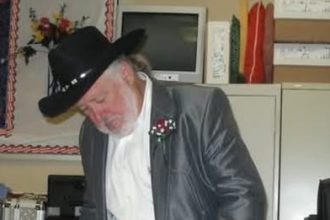The death of Dr. Stuart Farrimond, widely known as “Dr. Stu,” at the age of 43, has sent ripples of grief across the scientific and publishing communities. Best known as the author of The Science of Gardening, Farrimond passed away peacefully in his sleep at Dorothy House Hospice, a setting where he was surrounded by the love and support of his closest family members. His passing came after a long and openly shared battle with illness, during which he became not only a beloved science writer but a symbol of strength, transparency, and unyielding curiosity. As tributes pour in from every corner of the world, one thing is certain: Dr. Stuart Farrimond’s voice—measured, engaging, and full of heart—will echo through generations.
To understand the impact of this loss is to appreciate the expansive role Dr. Farrimond played in making science comprehensible, engaging, and profoundly human. Whether through his books, his appearances on television, his magazine columns, or his heartfelt blog posts, Farrimond possessed a rare gift: he could explain the complex and the technical in a way that felt deeply personal. For him, science was not just a body of knowledge; it was a way to connect—to draw people in, inspire them to question, and empower them with understanding.
Born in the early 1980s, Stuart Farrimond’s life trajectory led him through a rich confluence of medicine, research, science communication, and personal storytelling. While the article does not delve into his early background or formal education, it is apparent from the breadth and depth of his work that he was exceptionally well trained in the life sciences. His identity as a former brain tumour researcher provides crucial insight into his professional grounding and his eventual turn toward a more public-facing role. That transition—from lab coat to public educator—was not merely career-oriented but deeply intertwined with personal experiences. He knew what it meant to confront illness firsthand, and he brought that empathy into every word he wrote.
Farrimond’s professional acclaim arose most prominently from his contributions to science writing, particularly his bestselling The Science of series. These books were not dry manuals, but vibrant explorations into the hidden mechanics of daily life. Titles such as The Science of Gardening, The Science of Cooking, and other volumes in the same vein reached global audiences. They stood out not just for the information they conveyed, but for the accessible way in which they conveyed it. Where other texts might alienate with jargon, Farrimond invited with curiosity. He had a conversational tone that welcomed readers, regardless of age or background, to explore topics ranging from plant biology to the chemical reactions involved in baking bread.
The Science of Gardening—the work for which he is perhaps most closely remembered—was a masterclass in blending academic insight with everyday relevance. For home gardeners puzzled by their plants’ inconsistent growth, or for seasoned horticulturists seeking deeper insight into soil chemistry or photosynthesis, Farrimond’s book offered both answers and inspiration. He took readers beneath the surface of garden beds, showing them the invisible world of microbes, moisture levels, and nutrient uptake. He clarified myths, illuminated best practices, and brought scientific consensus to a realm often dominated by tradition and anecdote.
But the reach of Dr. Stu’s writing extended well beyond books. As a contributor to widely-read magazines, Farrimond engaged with audiences on a range of scientific topics. Though the article does not specify which publications he wrote for, his influence was clearly felt in popular media. His television appearances likewise cemented his role as a trusted voice in science communication. In an age where misinformation proliferates and trust in expertise can waver, Farrimond stood as a reliable interpreter of evidence-based truth. His media presence wasn’t performative; it was anchored in genuine passion, rigorous preparation, and a desire to help others see the world more clearly.
Perhaps the most poignant dimension of Farrimond’s public life was his blog, hosted at stuartfarrimond.com. While blogs are often ephemeral in nature, Farrimond’s became a sustained narrative of courage and insight. He used this platform to reflect not only on scientific topics but also on the deeply personal journey of navigating illness. As someone who had once been immersed in brain tumour research and later became a patient facing serious illness himself, Farrimond occupied a unique vantage point. He knew both the clinical protocols and the emotional terrain. He demystified treatments, explained prognoses, and, most importantly, humanized the medical journey for countless readers who saw their own stories in his. In doing so, he transformed his platform into something more than educational—it became a sanctuary for empathy and shared resilience.
The article notes that his death sparked an immediate and heartfelt response from a wide range of people—readers, colleagues, and fans. This outpouring of tributes speaks not only to the breadth of his influence but to the depth of connection people felt with him. Many described how his work reshaped their understanding of science. In a world where scientific illiteracy can have dire consequences—from climate denial to vaccine hesitancy—figures like Dr. Farrimond perform an invaluable public service. They bridge the divide between the expert and the layperson, between theory and application, between information and wisdom.
One of the key elements of Farrimond’s writing was its tone: always empathetic, always clear, and never condescending. He approached his audience with respect, assuming neither ignorance nor superiority. Instead, he met readers where they were and invited them to walk a little further with him into the world of discovery. In this way, his impact resembles that of other renowned science communicators who shaped public understanding, such as Carl Sagan, David Attenborough, or Bill Nye. Like them, Farrimond didn’t just disseminate facts—he awakened wonder.
Though the article does not provide specific sales figures or awards, it’s evident that Farrimond’s books were bestsellers and highly respected. The success of The Science Of series demonstrates a strong appetite among readers for reliable, engaging science content—especially when it is presented with the clarity and warmth that Farrimond mastered. His ability to synthesize scientific literature into digestible, entertaining prose did not dilute its accuracy; rather, it amplified its relevance.
His death at the age of 43 is particularly devastating not only because of his accomplishments but also because of the potential still ahead. By all measures, Dr. Farrimond was in the prime of his influence. He had already laid the foundation for a body of work that educated and uplifted, and it is natural to imagine the future volumes, talks, blog posts, and television appearances that would have continued to enrich public discourse. The scientific community has not merely lost a writer—it has lost a conduit, a translator, a mentor, and a beacon.
While funeral or memorial service details have yet to be announced, the emotional response to his death stands in for a collective ceremony of remembrance. Across social media and professional networks, fans continue to share excerpts from his books, quotes from his blog, and personal reflections about how his work touched them. This spontaneous archiving of his contributions ensures that his voice will not be lost with his passing. Instead, it becomes part of the larger conversation about how we understand and communicate science in the modern world.
From a sociocultural standpoint, Farrimond’s passing invites reflection on the growing role of science communicators in a deeply interconnected but often misinformed world. The COVID-19 pandemic, climate crises, and debates around public health have spotlighted the urgent need for voices like his—ones that are not just knowledgeable but trustworthy, kind, and patient. In this context, Farrimond’s work can be seen as not only educational but civic in nature. He gave readers the tools to make informed decisions, to appreciate the natural world, and to engage with evidence-based reasoning.
Moreover, his deeply personal transparency regarding his illness adds a layer of ethical integrity to his legacy. It is one thing to write about the science of the body; it is another to do so while living through the vulnerability of disease. Farrimond did not retreat from the spotlight when his health deteriorated. Instead, he continued to communicate, not from a pedestal, but from the very front lines of the human condition. In doing so, he expanded the definition of what it means to be a science writer—not just a conveyor of knowledge, but a companion in uncertainty.
As the scientific and literary communities come to terms with this loss, there is also an emerging sense of responsibility. Those who were inspired by Farrimond’s work may now carry forward his mission: to demystify, to educate, and to connect. Publishers will likely revisit his catalogue, offering reprints or special editions of his books. Educators might incorporate his writings into curricula. Young scientists may cite him as the reason they pursued a career in communication or public engagement. In this way, Farrimond’s death is not an ending, but a passing of the torch.
In sum, Dr. Stuart Farrimond’s death at 43 marks the departure of a singular voice in science communication. His work—anchored in evidence, compassion, and clarity—elevated public discourse and brought countless readers closer to understanding the natural world. Through books like The Science of Gardening, he illuminated the hidden patterns of everyday life, inviting us to see our surroundings with curiosity and respect. Through his blog and media presence, he shared not only information but himself, forging connections that transcended the page or screen.
As the world mourns, it also reflects. We consider the power of accessible science, the importance of empathy in education, and the enduring value of a life lived with purpose. Dr. Stuart Farrimond’s legacy will endure—not because he sought fame, but because he sought understanding. And in doing so, he helped countless others find their own path toward knowledge, courage, and wonder.




